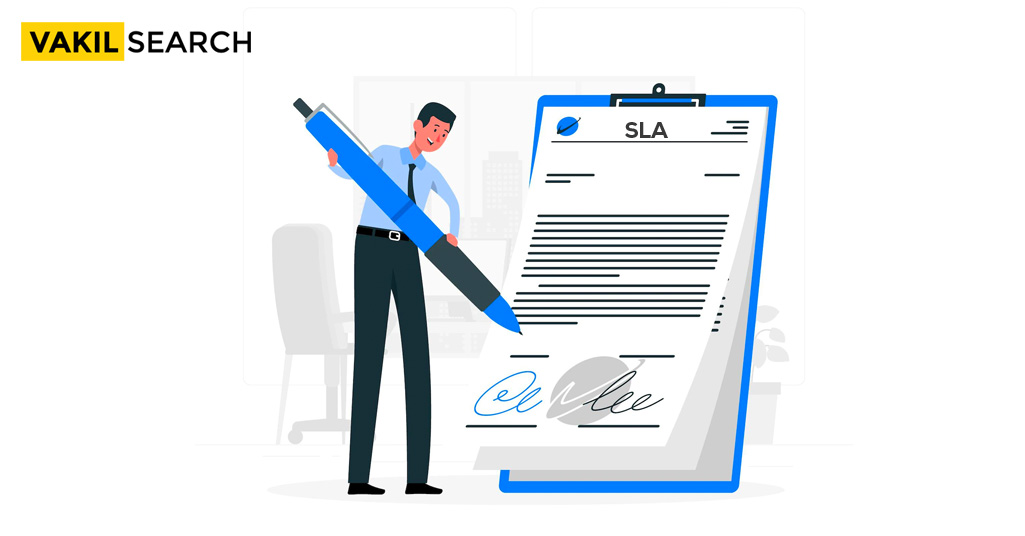The goal of Managing Service Level Agreements (SLA) is to keep track of the contracts and make sure the vendors are meeting their terms. Here is more detail about the purpose of SLA.
Service Level Agreements (SLA) are necessary for businesses that rely on third-party vendors and software providers to make their day-to-day operations possible. So that owners can make sure that they get the result they want. Without an SLA, there’s no way to know what level of service is acceptable. This puts your organisation in a very difficult situation.
Purpose of Service Level Agreements Management Systems
Modern businesses often rely on a wide range of third-party vendors to do simple things like run a store or send an email.
For example, you and your employees might use a lot of things like:
- The web help desk
- Platforms for hosting
- Software for e-commerce
- Software for project management
- In-house communication tools
Each one is an integral part of your business. If a service stops working or doesn’t meet your standards, it can greatly impact your whole business. Every time you use these examples, you should have a different SLA.
As your business grows, you’ll need to deal with more SLAs, making it even more important to have an SLA management system. Using a management tool, you’ll be able to store and quickly find all of your vendor contracts.
The system can help you figure out what each clause costs, how long it will last, and more. It can also let you know when an SLA is up for renewal.
You can do all of this with or without a system management SLA, but it gets a lot more difficult.
You need to know what to look for in an SLA management system that can help your business. Not all of them have the same features. Within no time, you’ll know if there is an SLA breach.
How Do Service-Level Agreements Work?
An SLA is a contract or framework that lays out what services you expect a third-party vendor to provide and when. Suppose you sign a deal with an enterprise hosting company.
- Many web hosts include service availability clauses in their service-level agreements (SLAs). These clauses outline “acceptable” situations in which there could be downtime.
- Using an SLA, you can get vendors to promise you a certain level of service. You and your partner can agree to this in writing, and if your partner doesn’t meet these standards, you may be entitled to money.
- In most cases, SLAs also state what happens if the vendor doesn’t do what it says it will do. There are times when you can get money back from an enterprise web host if they don’t meet their availability standards.
- Other types of “solutions” that you might see in SLAs include the option to break your contract early or a contractual agreement to fix technical problems in a certain amount of time, among other things.
It would be ideal if each SLA were a unique contract between your business and a third party. If you’re a vendor, you’re more than likely to use SLA Agreement templates for most of your clients. It’s very important to carefully look over these documents and make sure they meet your company’s standards.
Are you in the market for SLA system tools? Here are three things to look for:
- SLA monitoring and breaking the rules are done.
- SLA renewal notices will be sent to the person who is in charge.
- Comprehensive reports on SLAs
3 Things that Make the SLA System Important
It’s important to consider which features your business can use most when choosing a service-level agreement management tool. This section will discuss the essential things you need for SLA monitoring, no matter what kind of business you run.
SLA Monitoring and Breach Notification
Notifying people when a deadline isn’t met is the most important part of the Service Level Agreements tool. The system should be able to work with other IT systems in your company to see if the software you’re using is breaking their terms of service.
As soon as a vendor doesn’t do what they agreed, you can set up SLA breach notifications so that you know immediately. You’ll also be able to figure out how long the problem lasts, which is important when it comes to getting paid for your trouble.
Notifications About the Renewal of the SLA
As with any other contract, SLAs run out after a certain amount of time. When this happens, it’s up to you if you want to keep doing business with the vendor or end it. A good SLA monitoring system will let you know a long time before the contract ends, so you can think about things like:
- How much do you pay compared to how much do other services charge?
- During the last contract cycle, how well did you get service?
- There have been how many (if any) problems with the service has the vendor had?
- The level of help they’ve given in the case of a breach
All of this information should be easy to find with a sound SLA monitoring system. When you have all the information together, it’s easier to figure out if a vendor is giving you enough service.
Completion of SLA Reports
If you don’t keep an eye on SLAs and breach reports, it can be hard to tell if the vendors you work with are giving you good service. As a person who makes decisions, you rely on periodic reports to tell you about any problems the business might be having.
A Service Level Agreement system should have reporting tools that allow you to see how much each vendor has cost, how many incidents they have had, and how each vendor has performed.
Conclusion
If your business relies on many different software and service providers for day-to-day operations, you’re likely already familiar with many service-level agreements. With an SLA monitoring system, it’s easier to keep track of what vendors need and what they need to do. This could mean less time spent on technical problems on your end and better service for your end-users, saving you money and time.
Read More,










